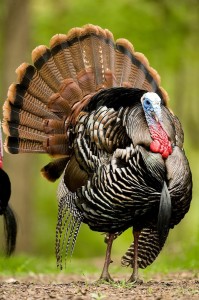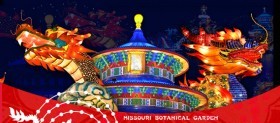
Photo courtesy of Missouri Department of Conservation
Legend has it that the turkey was founding father Benjamin Franklin’s preference for our national bird. In a letter to his daughter, he derided the bald eagle as “of bad moral Character”, and praised the turkey as “withal a true original Native of America… He is besides, though a little vain & silly, a Bird of Courage, and would not hesitate to attack a Grenadier of the British Guards who should presume to invade his Farm Yard with a red Coat on.”
He was certainly right about the native part, as turkeys originated in North America. And during the spring mating season, the males are perhaps a little vain and silly.
But the courageous part, according to resource scientist Jason Isabelle of the Missouri Department of Conservation, was probably wishful thinking on Franklin’s part. Turkeys are “incredibly cautious.” They are not fighters—their instinct is flight. That flight instinct is what makes them so challenging to hunt, because if they sense any threat they will just run or fly away. Since they can move on the ground at about 12 mph, they make it hard for the hunter to get off a shot. They can also fly for short distances, mainly to the trees where they roost at night.
Continue reading More than a meal: Wild turkeys are a conservation success story




